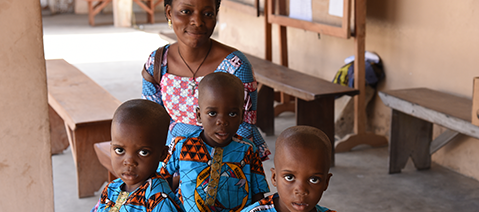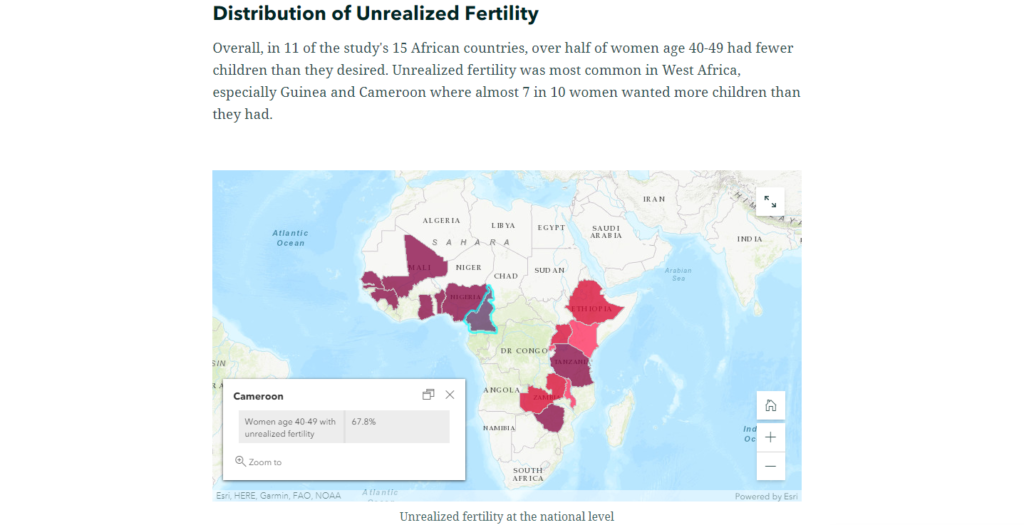Mapping Unrealized Fertility in Sub-Saharan Africa

Many women in DHS Program countries have fewer children than they desire. Our newest StoryMap explores unrealized fertility in sub-Saharan Africa, based on the recently published analysis Comparing Ideal and Completed Family Size: A Focus on Women in Low- and Middle-income Countries with Unrealized Fertility. Unrealized fertility is most common among women in Western and Central Africa where about 60% of women age 40-49 report that they had fewer children than they would have liked.
The StoryMap and paper also explore sex preference, ideal family size, and subnational variation in unrealized fertility.

Featured image © Roger Tete for PMI/USAID

